Do you cringe each time your nightclub’s doors swing open, knowing the blasting music disturbs the entire neighborhood? Controlling noise is key to keeping surrounding residents happy and achieving acoustic compliance.
This guide covers proven soundproofing methods using materials like mass loaded vinyl and floating floors. Follow 7 critical steps to contain noise in your venue.
Let’s dive in to transform your loud nightclub into an acoustically controlled entertainment mecca.
The Benefits of Soundproofing Your Nightclub
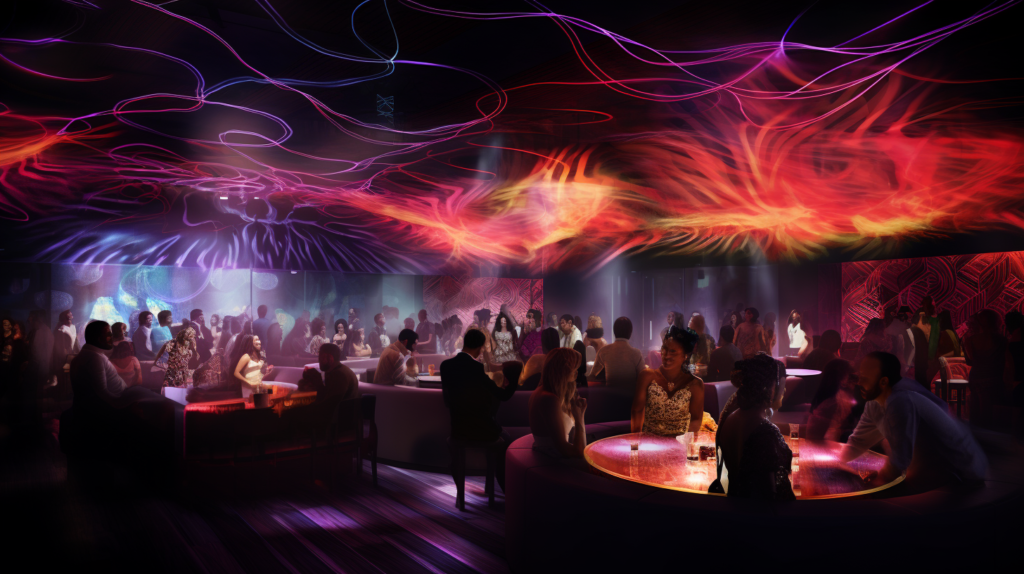
Putting in the effort to properly soundproof your nightclub provides many worthwhile benefits beyond just controlling noise issues. Here are some of the top advantages you can expect:
Meeting Local Noise Regulations – Every city and town has ordinances that limit noise from music venues, especially at night. Soundproofing contains loud music inside your business so you avoid fines, noise complaints, and forced early closings from police. Your neighbors will be happier when bass and music noise is reduced seeping into their homes and apartments nearby.
Improved Acoustics Inside – Soundproofing measures like absorption panels actually improve the interior acoustics as well. Controlling reverberation and echo makes music sound clearer for patrons and staff. Conversations will be easier to understand without excessive loudness required.
Lower Risk of Hearing Damage – Unchecked loud music and noise causes hearing damage over time to club employees and DJs as well as patrons. Implementing sound isolation, such as isolating and baffling stage speakers, reduces the volumes required for good coverage. This protects everyone’s hearing health.
Higher Overall Profits – With better acoustics, more comfortable volumes, and the ability to operate full hours, your nightclub can attract more patrons and increase drink sales. Reducing noise issues leads to improved customer satisfaction, reviews, and word of mouth as well. This all translates into higher revenues and profitability.
Increased Property Value – Commercial properties with noise issues sell for less than comparable ones without such problems. Thoroughly soundproofing your business makes the property more desirable if you ever want to sell or lease it in the future. This protects your investment in the space long-term.
Soundproofing requires an upfront investment of time and money. But the long-lasting benefits for your business, customers, and community make it one of the wisest improvements you can make. If done properly following the steps outlined here, the value added far exceeds the costs. Prioritizing effective acoustic treatments provides real benefits both now and into the future. Your nightclub will be better positioned for success when music noise is properly contained.
Soundproofing a Nightclub: A Comprehensive Step-by-Step Guide
Operating a lively nightclub comes with the expectation of booming music and raucous crowds. But controlling noise levels properly is crucial for complying with local sound regulations and keeping nearby residents happy. This detailed guide will walk you through the process of effectively soundproofing your nightclub in seven key steps. Follow this comprehensive advice to contain sound within your venue and reduce noise complaints from neighbors.
1. Soundproof Walls in a Nightclub for Effective Noise Blocking
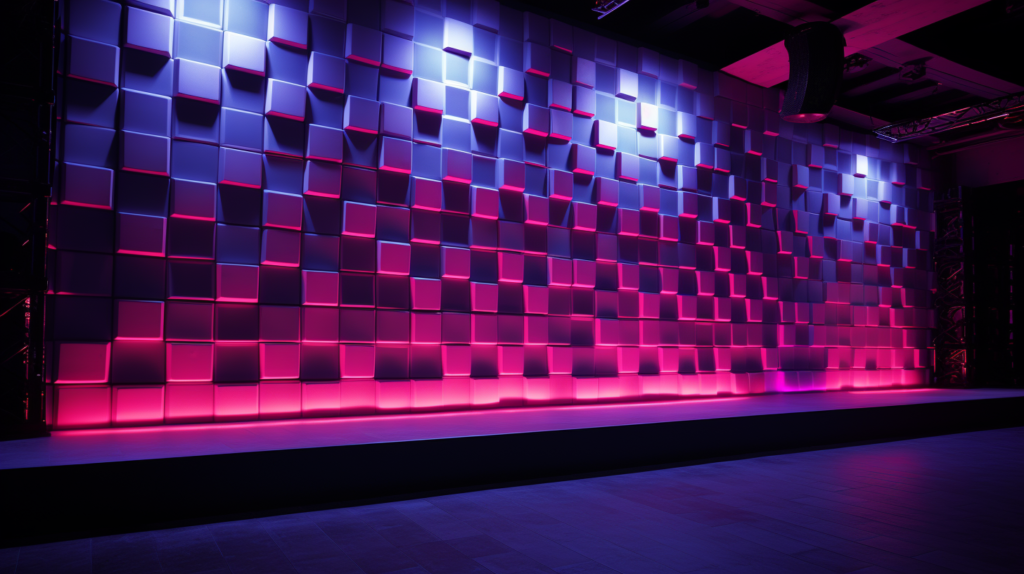
The first priority in any nightclub soundproofing project should be tackling noise transmission through the walls. Powerful subwoofers and overly amplified speakers can easily transfer throbbing bass beats and other airborne noise through inadequately insulated walls. Hollow drywall or plaster walls will do little to contain loud music noise. Here is a systematic process for treating your nightclub’s walls to maximize sound blocking:
If at all possible, fully expose the wall studs by removing any existing drywall, paneling, or other wall finishes. This will allow you to access the empty cavities between wall studs. Fill these entire cavities with dense mineral wool insulation. Mineral wool insulation, made from molten glass or stone, works extremely well to absorb mid and high frequency noise. Pack the insulation very densely into each stud bay, filling every square inch thoroughly without gaps. Then install resilient channels horizontally across the exposed wall studs. Resilient channels are long metal strips that act as noise isolators. When affixed perpendicularly across studs, they effectively decouple the drywall from the wall framing. Next, screw sheets of drywall directly onto the resilient channels. Make sure to seal all seams and perimeter gaps with acoustic sealant for an airtight finish. The combined techniques of increased mass from double drywall, noise absorption from insulation, structural isolation from the resilient channels, and meticulous air sealing will dramatically reduce sound transmission through your walls.
For existing concrete or cinder block walls, you likely will not be able to access the interior space between wall surfaces. In these cases, you will first need to construct new stud wall frames anchored securely to the concrete with tapcons or masonry screws. Build these new stud walls a few inches out from the existing concrete surface. Then fill the newly created cavities with insulation, install resilient channels on the studs, and attach drywall as described above. This layered wall system produces excellent soundproofing results for concrete or masonry walls.
2. Soundproof Ceiling in a Nightclub to Reduce Noise Transmission Above
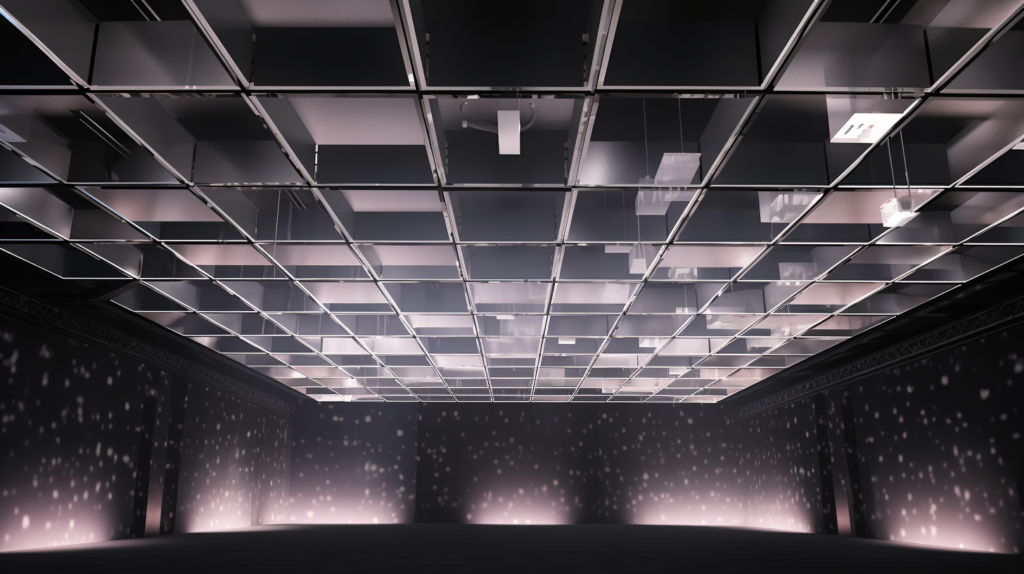
In addition to walls, your nightclub’s ceiling is another weak spot for noise transmission that must be addressed. Unwanted sound from music, crowds, and bass beats can easily make its way through typical drywall or plaster ceilings. Use a similar systematic approach as the walls – expose structure, insulate cavities, install resilient channels, and affix drywall. For the ceiling, the structural members are likely joists rather than studs. Exposing the ceiling joists may require removal of any existing ceiling finishes like drywall, tile, or plaster. Once exposed, pack the joist cavities full with dense mineral wool insulation bats to absorb sound. Then screw resilient channels perpendicularly across the exposed joists before attaching drywall over the channels. If possible, building an entirely new decoupled ceiling down below the original ceiling provides even better results. But this may not be feasible in some cases.
For existing concrete ceilings, anchor new wood or metal joists directly to the concrete surface using tapcons or masonry ties. Leave a few inch gap between the new joists and concrete above to form cavities. Insulate between these joists with mineral wool and finish as described earlier with resilient channels and double drywall. A soundproof ceiling reduces noise transmission to rooms and floors above the nightclub. Containing bass frequencies through the ceiling is especially important to prevent booming disturbances upstairs. Thoroughly sealing penetrations like light fixtures, ducting, and wiring holes maintains acoustic integrity.
3. Soundproof Floors in a Nightclub to Block Both Air and Impact Noise
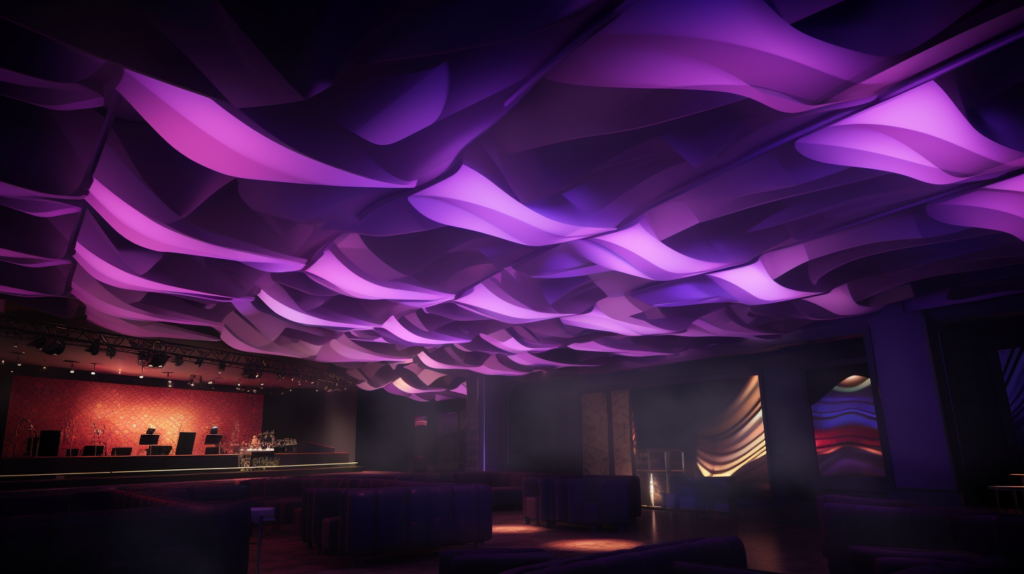
Nightclub floors require special consideration because they are vulnerable to both airborne and impact noise transmission. airborne noise includes music beats and bass notes coming through the subfloor from speakers below. Impact noise involves footsteps, shifting furniture, and dropped items that transmit vibrations into the floor. Laying acoustic underlayment like mass loaded vinyl (MLV) or cork mats across floors will help block these airborne and impact sounds from transferring to lower levels. Install these types of sound-dampening products wall-to-wall before placing your finished floor surface. Minimum 6 pound MLV or 1/4 inch cork underlayment is recommended.
Floating floor systems also work very well for soundproofing because they essentially isolate the finish flooring from the subfloor below. Laminate, engineered hardwood, and vinyl plank floors are common floating floor materials. They click together over foam underlay pads without nails or glue contacting the subfloor. For high foot traffic areas, large area rugs layered over additional carpet padding or underlayment will absorb impact noise from walking and furniture shifting. Installing new high-density carpet pads and commercial grade carpeting throughout your entire nightclub floor provides the best overall impact soundproofing.
4. Soundproof Windows in a Nightclub to Prevent Noise Leakage Outside
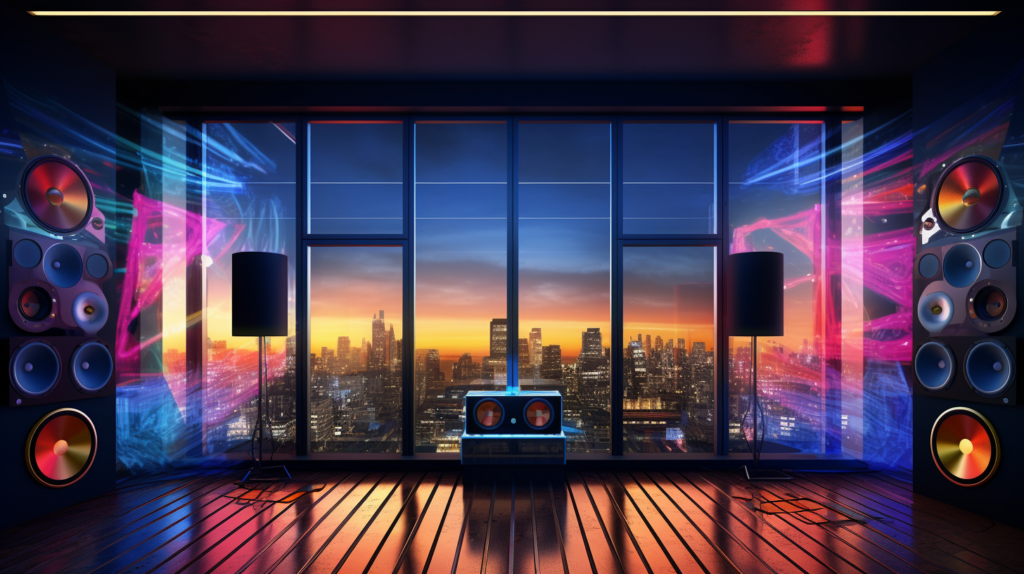
Windows deserve special attention when soundproofing a nightclub, as the large spans of glass readily transmit loud music and bass notes outside. Single pane windows offer almost no sound blocking capacity. Replacing existing single pane windows with new double or triple pane windows will provide a massive improvement in noise transmission loss. The air gaps between multiple glass panes reduce noise transmission much better than a single thin pane alone. Check window frames for any cracks, gaps, or openings and meticulously seal them with acoustic caulk for optimal sound isolation.
If fully replacing the windows is not feasible from a cost or historical preservation standpoint, adding interior window inserts can also greatly enhance soundproofing. Interior window inserts create an additional layer of glass to essentially form a double pane window within the existing frame. Ensure the inserts form a complete airtight seal all around the perimeter of the frame for maximum acoustic performance. Then draw the inserts closed snugly against the existing glass to minimize any coupling of vibrations. Used appropriately, these simple window inserts can improve soundproofing almost as effectively as brand new multi-pane windows.
5. Soundproof Doors in a Nightclub to Close Gaps Leaking Noise
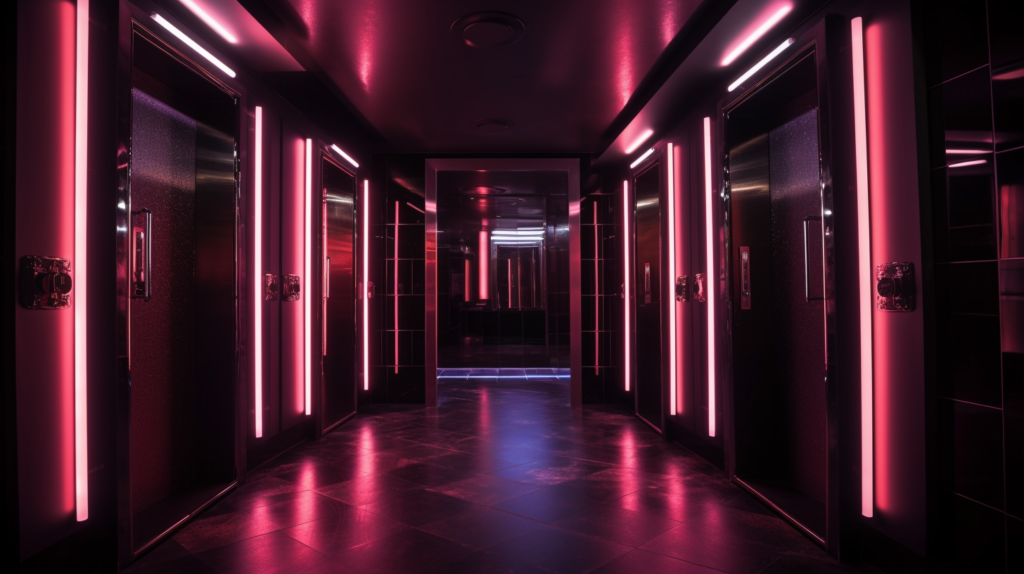
Doors, like windows, compromise sound containment due to inevitable gaps around their edges and their thin or porous materials. Replacing hollow core doors with well-sealed solid core doors is a critical component of nightclub soundproofing. Remove any existing lightweight doors at your venue’s entrances, bathrooms, or backrooms. Replace them with solid wood or steel door slabs which provide vastly superior noise blocking compared to hollow core. Next, install high quality weatherstripping around the entire door perimeter to seal air leaks when closed. Layer the sweep with the jamb seals for full coverage. Additionally, affix automatic door bottom sweeps on the inside to prevent sound flanking underneath into the gap between door and floor surface.
If fully replacing doors is not possible, adding mass loaded vinyl sheets can improve the soundproofing capacity of existing doors. MLV provides mass and damping that reflects sound better than porous materials. Thoroughly seal any openings or cracks around the edges and bottom with acoustical caulk. While not ideal, these upgrades will enhance most doors’ noise containment abilities. However replacing with solid core doors and full weatherstripping provides the most complete acoustic isolation.
6. Create a Sound Lock Entryway to Prevent Noise Escaping Each Time Doors Open

Patrons constantly entering and exiting through doorways poses an additional sound leakage challenge. Every time a door opens, pulses of music and crowd noise can escape outside. Constructing a sound lock entryway mitigates this issue elegantly. Simply install a second small vestibule room at all primary nightclub entrances with two sets of doors that patrons pass through. The airlock effect of having two separated doors provides better acoustical isolation as patrons enter and leave the venue.
Line the interior walls and ceiling of this entrance sound lock with 2 to 4 inch acoustic panels. These will absorb and dissipate noise within the space rather than letting it transmit outside when the exterior door opens. Use solid core doors fitted with automatic door bottoms and perimeter seals to minimize leakage. Allow enough floor space for patrons to comfortably enter and wait between doors. Maintaining music, conversations, and noise within this interior vestibule is key to preventing sound from reaching the street. A well-designed double door entryway goes a long way in containing noise.
7. Isolate Loudspeakers and Stage to Limit Noise Overflow and Leakage
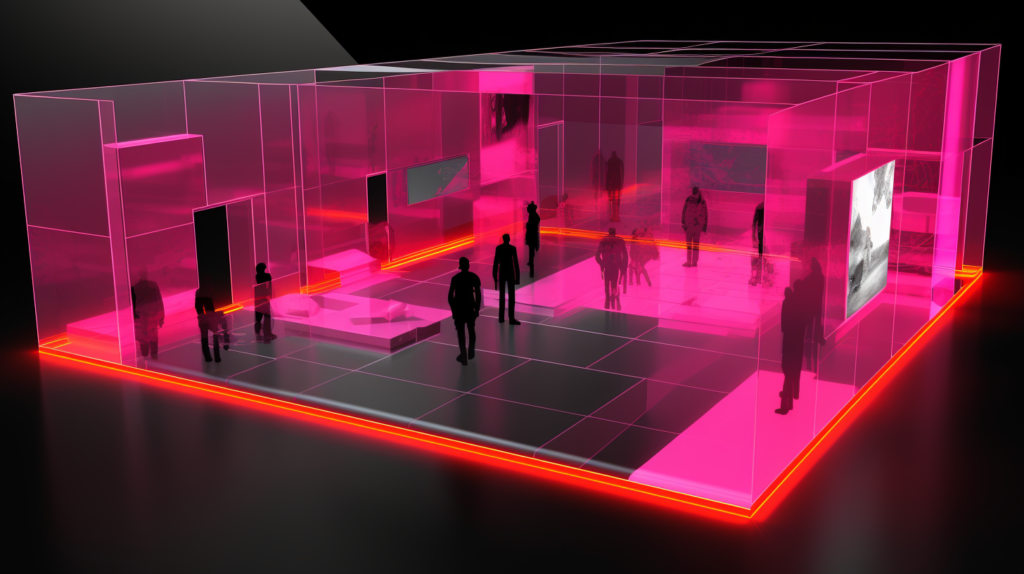
Loudspeakers aimed at patrons on the dance floor or towards seating areas are one of the primary noise sources in any nightclub. Isolating these speakers and separating the stage from other areas helps prevent sound overflow to adjacent spaces. Construct a room-within-a-room style stage enclosure using a floating floor system over your existing stage deck. Floating floors, built over isolating pads, absorb vibrations and impacts rather than transferring them to the original floor. Carefully construct baffles around stage monitor speakers, amplifiers, and subwoofers to contain sound and limit bleed into the house mix.
Strategically angle your main loudspeakers towards the center of the audience area and away from nearby walls to minimize reflection. Add fill speakers throughout the patron areas for more even coverage so volumes do not need to be as excessive. Following these techniques for isolating and targeting stage speakers reduces unnecessary amplification and prevents noise leakage from your stage areas. Containing the stage sound makes the whole club quieter.
Conclusion
Completely soundproofing a nightclub requires diligence, time and attention to all the possible paths sound can escape the building. Implementing these seven steps carefully will effectively contain noise within acceptable levels to meet local regulations and prevent disturbing neighbors. Combining increased mass, absorption, isolation, and meticulous air sealing provides optimal acoustic control. Some advanced soundproofing projects may warrant working with specialized acoustical engineers and contractors. But following this guide, even DIY improvements will go a long way to reducing nightclub noise. With strategic planning and diligent execution, you can successfully soundproof any music venue or nightclub space. Your patrons and community will appreciate the results.
